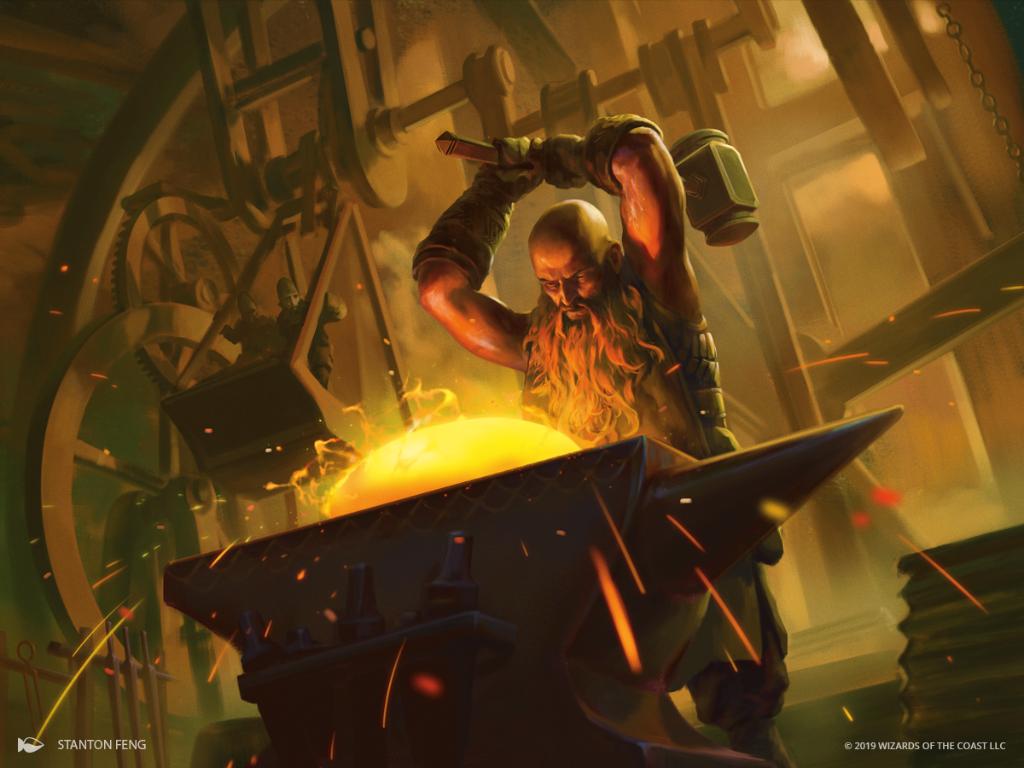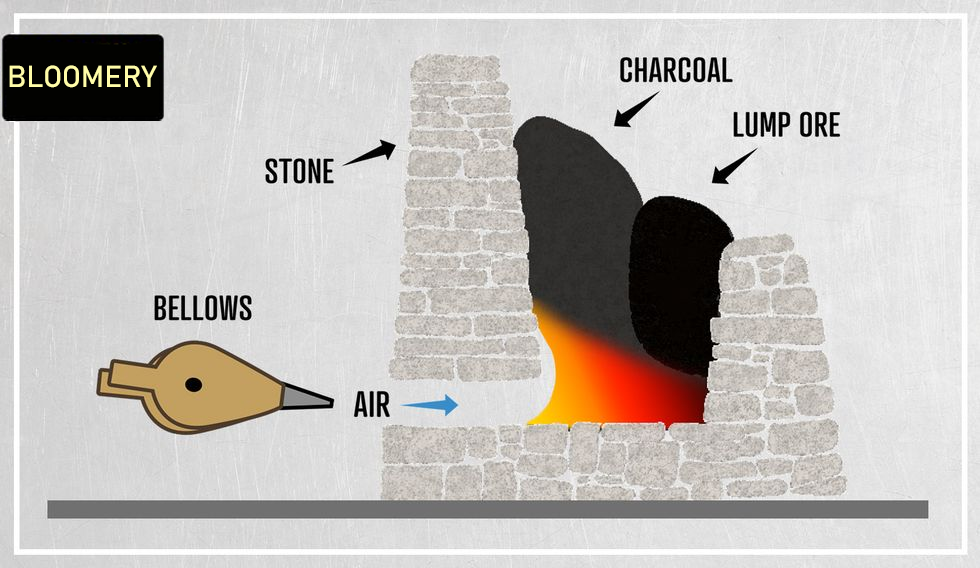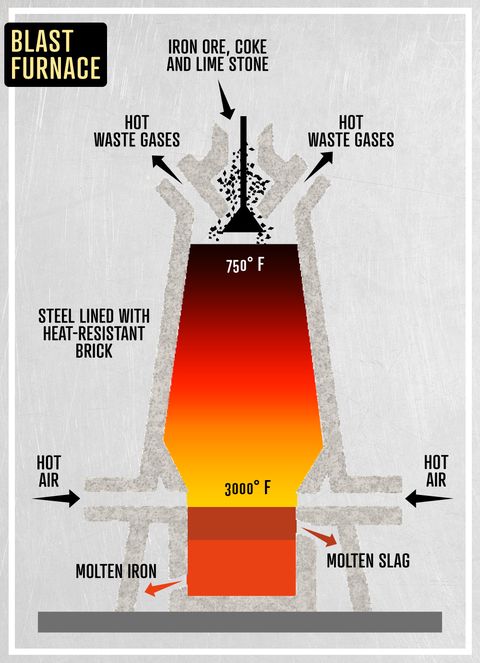Industry in the Empire
Molten Iron and burning forges. Hammers and tongs shaping Steel and pickaxes digging up Coal in mines. Industry is the heart of The Empire, and its soldiers cannot fight with will and determination alone. For the armies of the Legio Imperallis to march, they must be equipped and maintained with the work of tens of thousands of citizens.
In the very beggining, during the Holy Crusade there was no need for dirty work in mines and metalworking. Angels were summoned by the gods fully armed and armored, and the first Mortals to be made by them were gifted powerful artifacts to wield.
By the late years of the Age of the Divine rudimentary smelters and basic mining and blacksmithing techniques were known, and those that employed them were outliers. The exception to this were the Dwarven Clans, who by then had spent a millenia mastering the arts of mining, smelting, refining and smithing, guided by Yiortis. The dwarven secrets and techniques would remain heavilly guarded, and only breached with the invention of the Blast Furnace in 461 P.F. .
With the events of The Schism, and later AngelDeath, the mortal races inhabiting the world quickly realised that they would have to adapt and invent in order to create the arms and armor to defend themselves with. For a time, humans were only able to find wooden and stone tools, and whatever divine artifacts they could scrounge, to defend themselves, which led to utter devastation against the beings of chaos and evil that attacked them. While the scattered remains of the mortal races were being purged by the demonic invaders, the infighting between the invaders would allow time for the first Bloomeries to be created.
The invention of Bloomeries took place around 31 B.F. , and is widely regarded by historians to be what turned the tide, and allowed for the founding of the Empire. As the bloomeries became more advanced, and techniques evolved, men and women were able to be armed with sturdy iron weapons and armor, that they used to great effect to take back their land. While Gondor Lionell was armed with divine weapons and armor, the armies of the First Crusade were fed by iron and charcoal.
With the passing of time, and increased sophistication and development, bloomeries became more and more sophisticated, using waterwheels to power bellows, and imporved smithing techniques. Efficiency slowly increased,more metals were able to be worked, and production grew. For the majority of the Empires history, weapons and armor were made at the Dwarven Clans, and were shipped down the River Lionel at a very high cost. While dwarven made weapons and armor are of a high quality, the prices demanded are also extremely high, and that left open the door for duchies within the Empire to grow their own production. Capitols such as Rivershore would become centers of trade and industry, as all others raced to match the Dwarven standard.
Most recently, the invention of the Blast Furnace has shocked the world, and increased potential production of metals exponentially. While bloomeries were slow and could not fully melt metal, with bars having to be imported from the dwarves, Blast Furnaces can run continually for years, and while fuel and ore is shoveled in, keep producing molten metals with unrivaled efficiency. While their adoption has been slow, and mired in political turmoil, they are steadilly expanding, and being refined. This is heralded by some as the end of dwarven hegemony over metallurgy, allowing even alloys such as steel to be produced cheaply, but many are not so certain. One thing is for sure, if this continues unimpeded, the industry of the Empire will explode in the coming century.
In the very beggining, during the Holy Crusade there was no need for dirty work in mines and metalworking. Angels were summoned by the gods fully armed and armored, and the first Mortals to be made by them were gifted powerful artifacts to wield.
By the late years of the Age of the Divine rudimentary smelters and basic mining and blacksmithing techniques were known, and those that employed them were outliers. The exception to this were the Dwarven Clans, who by then had spent a millenia mastering the arts of mining, smelting, refining and smithing, guided by Yiortis. The dwarven secrets and techniques would remain heavilly guarded, and only breached with the invention of the Blast Furnace in 461 P.F. .
With the events of The Schism, and later AngelDeath, the mortal races inhabiting the world quickly realised that they would have to adapt and invent in order to create the arms and armor to defend themselves with. For a time, humans were only able to find wooden and stone tools, and whatever divine artifacts they could scrounge, to defend themselves, which led to utter devastation against the beings of chaos and evil that attacked them. While the scattered remains of the mortal races were being purged by the demonic invaders, the infighting between the invaders would allow time for the first Bloomeries to be created.
The invention of Bloomeries took place around 31 B.F. , and is widely regarded by historians to be what turned the tide, and allowed for the founding of the Empire. As the bloomeries became more advanced, and techniques evolved, men and women were able to be armed with sturdy iron weapons and armor, that they used to great effect to take back their land. While Gondor Lionell was armed with divine weapons and armor, the armies of the First Crusade were fed by iron and charcoal.
With the passing of time, and increased sophistication and development, bloomeries became more and more sophisticated, using waterwheels to power bellows, and imporved smithing techniques. Efficiency slowly increased,more metals were able to be worked, and production grew. For the majority of the Empires history, weapons and armor were made at the Dwarven Clans, and were shipped down the River Lionel at a very high cost. While dwarven made weapons and armor are of a high quality, the prices demanded are also extremely high, and that left open the door for duchies within the Empire to grow their own production. Capitols such as Rivershore would become centers of trade and industry, as all others raced to match the Dwarven standard.
Most recently, the invention of the Blast Furnace has shocked the world, and increased potential production of metals exponentially. While bloomeries were slow and could not fully melt metal, with bars having to be imported from the dwarves, Blast Furnaces can run continually for years, and while fuel and ore is shoveled in, keep producing molten metals with unrivaled efficiency. While their adoption has been slow, and mired in political turmoil, they are steadilly expanding, and being refined. This is heralded by some as the end of dwarven hegemony over metallurgy, allowing even alloys such as steel to be produced cheaply, but many are not so certain. One thing is for sure, if this continues unimpeded, the industry of the Empire will explode in the coming century.
Header art credit: Staton Feng - Wizards of the Coast
Other art credit: Michael Stillwell
Other art credit: Michael Stillwell




